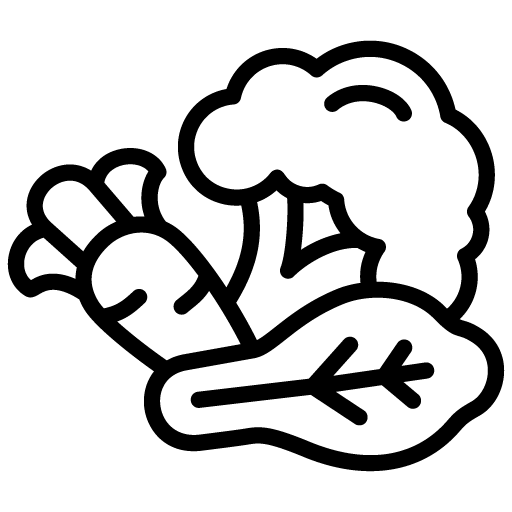Each cell in our body must have 2 things: glucose and oxygen. To get oxygen to the places it needs to be, the body makes hemoglobin to carry it from the lungs to all parts of the body and myoglobin to get it to the muscles.
Iron is closely regulated by the body. Too little and there is not enough oxygen carrying capability. With too much, there can be increased oxidative stress and build-up in vulnerable tissues such as brain, heart, lungs, joints, muscles, etc.—which ultimately leads to inflammation, pain, and dysfunction.
Low Iron
What is anemia?
Our blood carries oxygen, nutrients, and other essential compounds. It also helps regulate temperature, fights infection, and removes waste products.
Anemia affects oxygen levels and occurs when your body makes too few RBCs, destroys too many RBCs, or loses too many RBCs.
Making too few RBCs
To make enough healthy hemoglobin and RBCs, your body needs iron, vitamin B12, folate, small amounts of other vitamins and minerals, protein, and hormones such as erythropoietin.
Your body’s ability to make RBCs can be affected by diet or gut issues, micronutrient deficiencies such as copper which helps the body absorb iron, or chronic conditions that limit absorption of micronutrients. For example, if the body senses an infection or inflammation, it will limit iron absorption so as not to “fuel the fire” as pathogens need iron to flourish.
Destroying too many RBCs
Sometimes, RBCs are destroyed before they reach their natural lifespan of about 120 days or are destroyed in such large numbers that the bone marrow can’t keep up with the demand. This can be caused by chronic diseases, infections, enzyme disorders, or autoimmune conditions.
Loss of RBCs
The loss of RBCs leads to low levels of iron which is a catch 22— without enough iron, your body will make fewer RBCs, and the RBCs it makes will probably have less than optimal hemoglobin. Any issue that leads to excessive bleeding from gut destruction from celiac and colitis all the way to heavy menstrual bleeding can cause low iron levels.
How does inflammation affect my iron levels?
If the body senses an infection or inflammation, it will limit iron absorption so as not to “fuel the fire” as pathogens need iron to flourish.
The body releases Hepcidin to block intestinal iron absorption and iron recycling—which leads to restricted RBC production. Low hepcidin levels favors getting iron from the bone marrow for hemoglobin and RBC production.
Who is at risk for low iron levels?
According to hematology.org,
- Folks with inflammatory issues or infections.
- People with gastrointestinal diseases
- People with peptic ulcer disease
- Women who are pregnant or breastfeeding or those who have recently given birth
- People who have undergone major surgery or physical trauma
- People who have undergone gastric bypass operations
- Vegetarians, vegans, and other people whose diets do not include iron-rich foods (Iron from vegetables, even those that are iron-rich, is not absorbed as well as iron from meat, poultry, and fish)
- Those who drink more than 16 to 24 ounces a day of milk (which not only contains little iron, but can also decrease absorption of iron and irritate the intestinal lining leading to blood loss)
What are signs and symptoms of anemia?
The signs and symptoms of anemia depend on how severe the anemia is and how quickly it develops. Generally, signs and symptoms increase as the anemia gets worse.
Early symptoms may include fatigue, weakness, or pale or yellowish skin. Later symptoms might be fainting or dizziness, increased thirst, sweating, weak and rapid pulse, fast breathing, lower leg cramps during exercise, shortness of breath, neurological issues, etc.
A lack of RBCs also may cause heart-related symptoms such as abnormal rhythm, murmur, an enlarged heart, or even heart failure —as the heart must works harder to maintain sufficient oxygen levels.
How can I increase my iron levels?
Diet is the number one go to. Increasing and supporting the digestion of iron rich food and reducing phytates which can bind to iron may help. Taking vitamin C or betaine HCL with meals may provide extra acidify gut to aid absorption.
BTW: Taking iron supplements is only recommended once inflammation and infection has been ruled out.
High Iron
Does high iron cause health issues?
Interesting enough, research indicates that more people actually have iron levels that are considered too high rather than too low. In one study of more than 1,000 people, only 3 percent were iron deficient, whereas 13 percent exhibiting iron overload. Another common high iron disorder, Hemochromatosis affects as many as 1 in 200 people.
Although iron is essential for hemoglobin production, when in excess, it can create significant oxidative stress. In addition, too much iron can accumulate in tissues, especially in the pancreas, liver, joints, heart, and brain. Both of the above can lead to inflammation and degenerative disease.
What are some symptoms of high iron in the body?
- Bronzing or graying of the skin
- Fatigue
- Joint and muscle pain
- Unexplained weight loss
- Issues with memory or brain function
- Decreased libido
- Enlarged liver or painful liver
- Generalized abdominal symptoms, including pain
- Irregular heartbeat
- Lethargy
- Muscle weakness or musculoskeletal pain
- Thinning hair anywhere on the body
How does high iron affect my health?
- Free iron appears to waken “dormant” microbes which can contribute to chronic inflammatory disease.
- High free iron leads to Fenton reactions which create excessive free radical damage.
- Excessive iron causes health issues through oxidation-the same process that causes metal tools to rust and cooking oil to turn rancid.
- Too much iron can affect absorption of zinc, manganese, molybdenum, and copper.
What are some conditions affected by high iron?
Brain Function
Alzheimer’s, dementia, and neuroinflammation can all be caused or worsened by high iron.
High iron can lead to the production of free radicals which damage neurons. Iron is also known to accumulate in brain regions associated with memory and function. Iron can also react with beta-amyloid plaques found in the brains of Alzheimer’s patients.
Potential Tumors
High levels of dietary iron have been linked to the increased development of tumors in humans. For example, studies showed a significant association between almost 50% of the 61 genes involved in iron metabolism with a breast cancer prognosis.
Elevated ferritin and iron saturation rates have been associated with cardiovascular disease and cancer. According to a Danish study of 45,000 subjects, iron saturation was a factor used to predict mortality.
Liver Dysfunction
Approximately one third of patients with non-alcoholic fatty liver disease have signs of disturbed iron homeostasis. Hepatitis is closely linked to iron overload and hemochromatosis has associated with liver damage and scarring.
Thyroid Issues
Iron is required for: thyroid hormone production, the conversion of T4 into T3, and for utilization of thyroid hormone in the cell. Too much iron can build-up in the thyroid gland creating inflammation and potential for autoimmune development.
What are some causes of excess iron?
- Genetic predisposition especially in British/Irish/Welsh ancestry
- Regular alcohol consumption
- Excessive red meat consumption
- Cooking in cast iron skillets
- Eating processed foods fortified with iron.
- Taking supplements that contain iron
- Taking iron enhancers such as Vitamin C
- Liver diseases such as hepatitis
- B12, folate, or b6 deficiency which limits the production of hemoglobin and RBCS which requires iron.
- Inadequate protein intake for hemoglobin and transferrin production (needed to move iron from the storage area to the bone marrow)
- Copper deficiency since copper is required for transporting iron
- Genet6ics: According to Bob Miller, CTN, SNPs in the following genes may play a part in iron issues.: HFE , SLC48A1 , SLC11A2 , FTL ACO1, TRF2 , TF , HMOX
How do I get rid of excess iron in my body?
- Decrease the consumption of foods that are high in iron such as red meat
- Decrease alcohol, sugar, nicotine, vitamin C, and beta-carotene use – which all increase the absorption of iron.
- Consume green tea, rosemary, black tea, coffee, etc. which help reduce iron absorption.
- Your body can get rid of excess iron through blood loss or blood donation. Most premenopausal women rarely suffer from iron overload due to monthly blood loss, but most adult men and postmenopausal women tend to be at higher risk.
- Supplements such as curcumin can act as an iron chelator.
How do I test for iron in my body?
If we were to only measure serum iron, we could possibly miss iron overload–even in those with chronic iron conditions. In our practice, we offer a Functional Blood Chemistry Analysis (FBCA) that includes a comprehensive iron profile—-bound iron, TIBC (the availability to move around the body), ferritin (which indicates issues with iron storage), and % iron saturation. We also run a complete blood count (CBC) which helps identify the type of anemia and provides red blood cell status.
With additional FBCA markers, we are able to focus the potential finding root cause of iron issues— signs of gut issues such as low stomach acid or leaky gut, various nutrients (whose absorption can be affected by low iron), inflammation (which can sequester iron), liver markers, etc..









